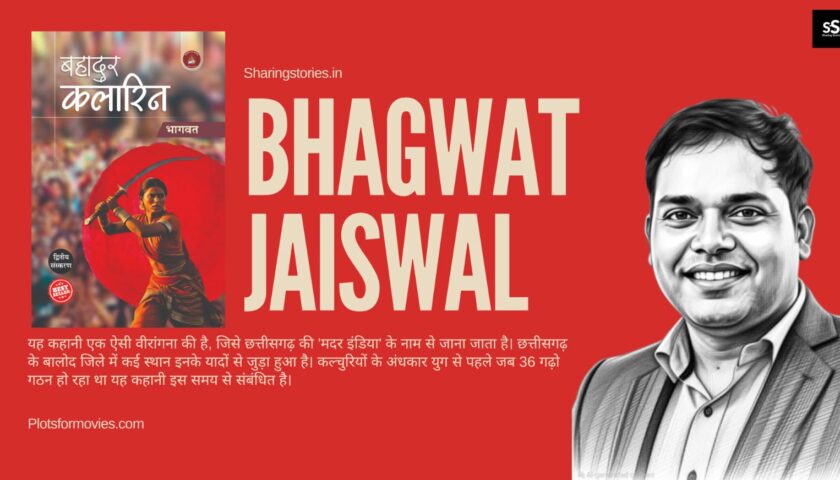What inspired Bhagwat Jaiswal to write about this brave woman who is remembered as the “Mother India” of Chhattisgarh?
“Bahadur Kalarin was a brave warrior woman from central India, who wielded influence in the Central region around the 12th century. While people are familiar with the warriors and kings of the Sultanate era, not much is known about the brave men and women who fought under regional dynasties during that time. I had heard many oral stories and anecdotes about Bahadur Kalarin, but none of the books provided a comprehensive historical account of her life. So, I thought, why not write a book that not only chronicles the events of that era but also tells the epic story of Bahadur Kalarin’s bravery?”
How did you research the history of the Kalchuri period and the formation of the 36 forts to bring authenticity to your narrative?
“As a student preparing for the Civil Services exam, I studied not only Indian history but also the history of our state. In those studies, I came across mentions of the Kalachuri dynasty and Bahadur Kalarin. Building on that foundation, I did some research, pieced together scattered facts, and wove them into a narrative that brings to life the possible events of that era. This book is a culmination of that effort, where I’ve tried to recreate with facts the story of Bahadur Kalarin and the times she lived in.”
Many places in Balod are tied to her memory—did you personally visit these sites, and how did they influence your storytelling?
“I visited the villages of Chirchari and Sorar in Balod, which was once known as Suharagarh, and found several places associated with Bahadur Kalarin’s story. The temples of Bahadur Kalarin and Chhachhan Dev, as well as the Annakoot hole site, still exist in these villages today. Along with my group, I had the opportunity to explore these places and observe their historical significance firsthand.”
What first drew you toward writing historical or biographical stories?
I’ve always been fascinated by the stories of people who came before us – the struggles they faced, the triumphs they achieved, and the legacies they left behind. I think what really drew me to writing historical or biographical stories is the opportunity to uncover hidden gems, to shed light on forgotten figures, and to bring the past to life in a way that’s both informative and engaging.
Plus, I think historical stories have a way of teaching us about ourselves and our own place in the world.
Book Promotion Agency: SharingStories.in is a dynamic platform designed to support self-published authors, offering them a cost-effective marketing and promotional space to engage with readers. The Platform in association with a Book Trailer Platform Plotsformovies.com is redefining Book Promotions. We offer a wide range of Services such as Author interviews, book reviews, AI Book Trailers, Social Media campaigns alongside tools and a blogs that suggest various book marketing ideas.
Did you face any challenges in balancing history with storytelling while writing this book?
“When writing about someone’s biography or historical facts, an author needs to be cautious and preserve the true essence. The narrative should neither become too academic nor resemble the style of a bardic poet. When writing about a historical figure, the facts, places, and events associated with them are of utmost importance. Along with thorough research, it’s crucial to maintain the right tone and emotional authenticity.”
How do you hope readers will connect emotionally with this story?
This book is more than just a historical account; it’s a story of one person’s struggle, bravery, and sacrifice. By reading ‘Bahadur Kalarin’, readers will be touched by the emotional depth and valor of the courageous woman, Kalavati, evoking feelings of compassion and admiration.”
Which authors or books have influenced your writing style the most?
“Having read numerous history books since childhood, I’ve noticed that the way facts are presented in those books and the emotional depth found in Premchand’s stories are two distinct styles. This book on the historical figure, Bahadur Kalarin, combines both approaches, blending factual narrative with emotional resonance, making it a unique blend of history and storytelling.”
What advice would you give to aspiring authors who want to write about history and unsung heroes?
“When writing about any historical character, it’s essential to ensure that the facts are as close to the truth as possible. However, history often has fragmented facts that may be interpreted in different ways to enhance the narrative. While navigating these facts, authors should be mindful of the chronological, geographical, and historical context to maintain accuracy and authenticity.”




